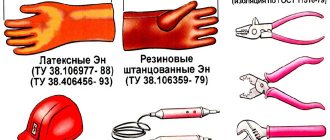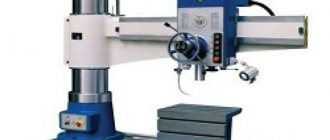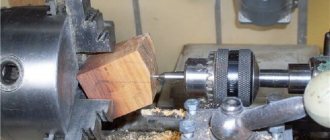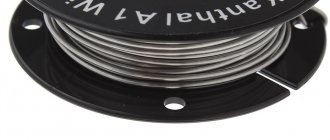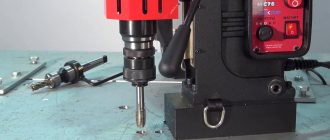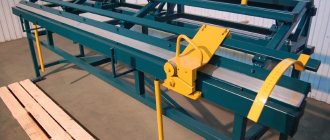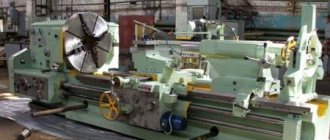Pincers and forceps are the most ancient devices known since prehistoric times. According to historians, they were initially used in blacksmithing, but very quickly formed a large group of pliers. Today, the number of varieties of such devices is very large; not every master can list them all at once. They are usually called pliers or pliers, although almost every design option has its own name.
It is noteworthy that significant changes in the design of such instruments have not been made for a very long time, despite noticeable changes in the appearance of other devices. In addition, the specific use does not imply the creation of a power tool from these devices. Let's take a closer look at them.
What are pliers and pliers?
1-Pliers 2-Pliers
Both types are the most common and extensive types of pliers. They all have a similar design - two identical (most often) elements connected by a hinge. On one side there are handles, the other part is the working part.
The difference between all types consists of two positions:
- Sponge shape . This indicator determines the name and purpose of the tool.
- Hinge type . The classic type is a fixed hinge, but detachable options are often found that allow you to change the size of the working base (the grip width of the jaws).
The purpose of the tool is determined by the shape of the jaws. It can have cutting edges, cutouts that provide a stronger and tighter grip, and form a kind of template for bending various parts.
The following varieties exist:
- Pliers.
- Pliers.
- Wire cutters.
- Side cutters.
- Round nose pliers.
- Long nose pliers.
- Needle nose pliers.
- Ticks.
Expert opinion
Levin Dmitry Konstantinovich
In everyday life, any type of tool at the disposal of a craftsman is often called pliers. This is wrong, but it is not important for a home master. However, when communicating between specialists or in a store, you should be precise and understand the differences between the tools.
Origin of the word pliers
The word “pliers” is borrowed from the French language (such words are called gallicisms). And it comes from the two-root word pince-à-tige.
Phonetic transcription - [pɛ̃səatiʒ]. That rare case when a French word entered the Russian language almost without distortion (only the “s” was doubled, apparently for elegance).
In turn, pince-à-tige consists of the words:
- pince [pɛ̃s]— clamp,
- tige [tiʒ]—rod.
It turns out that the literal translation from the French word “pliers” is a clamp for a rod.
By the way, some dictionaries indicate that pliers come from the French words passe (passage) and tige (rod). But then the literal translation turns out to be illogical - “passage for the rod.” An unlikely theory.
If you turn to the Big Encyclopedic Polytechnic Dictionary, it gives the following meaning of the word pliers :
manual plumbing, assembly and electrical installation tools, which combine pliers and wire cutters (in a hinge); two notches with teeth are used for wrapping small pipes to connect. couplings, nipples, nuts, etc. (see figure). One of the P.'s handles may end with a screwdriver blade, and the other with a square hole punch.
Difference between pliers and pliers
The difference between both types is not fundamental, but quite definite.
Pliers are designed for gripping, squeezing, and bending various parts or workpieces. The working surfaces are straight, usually with fine corrugation to prevent the material from slipping when gripping.
Pliers are a universal tool. They are capable of performing a significantly larger number of operations and tasks, since their jaws are equipped with various recesses, grips, and cutting edges on both the inside and outside.
A typical set of functionality typical of pliers:
- Capturing, clamping parts.
- Bending wire or sheet metal.
- Biting wire, nails, screws, etc.
The versatility of pliers makes them the main type of pliers. They are used by electricians, mechanics, technicians, and other specialists. Due to their capabilities, they are included in the mandatory set of tools and devices required to perform most technical or construction tasks. Often pliers are equipped with additional tools - a grip on the other side of the hinge, auxiliary devices at the ends of the handles (screwdriver or awl). The demand and popularity of the instrument is confirmed by the large selection of manufacturers and models available on store shelves.
Pliers tools
Almost any type of locksmith work uses similar tools. All of them consist of a head, a handle and a movable axial joint . Since ancient times, blacksmiths have used large pliers in their work, with the help of which they held the workpiece on the anvil.
Over time, society, craft and tools changed. Simple pliers have evolved into a whole range of multifunctional and useful devices. Round nose pliers, wire cutters, pliers and pliers appeared.
Features, technical specifications
The main technical characteristics of pliers and pliers are:
- Size (total). Usually ranges from 10 to 20 cm.
- Width of jaws. standard - 2-3 cm.
- Opening angle of working surfaces. Depends on the type of hinge and specific design features.
- Set of functions (for pliers). The presence of cutting surfaces, the ability to cut through steel wire using a groove on the outer surface of the jaws, a return spring, etc.
- Hinge type. There are fixed or adjustable designs
- Availability of rubber, PVC or plastic linings for handles
- View
- Coatings: Tools are available in chrome or blued finish.
The main feature of the tool is the presence of two handles that perform dual functions:
- Used for holding in hands.
- Adjust the amount of opening and compression force of the jaws.
Expert opinion
Levin Dmitry Konstantinovich
Working with insulated handles allows you to protect yourself from electric shock and provides comfort when using the tool in severe frost. However, there are pliers and pliers that do not have additional elements. They are usually used for working with hot objects when the safety of the handles cannot be ensured. In such situations, hand protection is necessary - mittens, suede gloves, etc.
So what is the difference between pliers and pliers?
Firstly, in shape and size. Pliers are much larger and more massive than pliers!
Secondly, in functionality. Pliers are a multi-functional tool, while pliers are used only for one job (bending).
Thirdly, pliers are equipped with additional elements, for example, wire cutters for cutting wire. The pliers do not have these elements.
So, it becomes obvious that pliers and pliers have different functions and uses. So why do some consider them to be the same instrument? The question remains a mystery.
Author's opinion! It is better to choose pliers than pliers because pliers can accomplish many more tasks than pliers. Plus, the insulation of the handles of the pliers can withstand up to 100 Volts, so they are simply an indispensable tool in electricians.
Pros and cons of the tool
The advantages include:
- Multifunctionality, versatility of use, ability to perform various tasks.
- Compact, light weight, easy to carry the tool with you.
- Wide choice of size, shape, additional functionality.
- Affordable price.
Flaws:
- The metal is prone to corrosion, so it is necessary to organize appropriate conditions for storing the tool.
- The fixed hinge is subject to loss of mobility and requires periodic lubrication.
- The handles wear out quite quickly and require replacement.
The disadvantages can be considered design features, since they are equally inherent in all pliers. The high demand and demand for pliers and pliers is well confirmed by the presence of one or several copies for every specialist and home craftsman.
Rating of pliers
For long-term use, it is recommended to get acquainted with popular models that have proven themselves well. These include:
- BAHCO 8285
. Adjustable device made in France. Used to perform installation work with workpieces of different sizes. Material – alloy steel. - ProsKit PM-912
. Dielectric reinforced pliers. Material – high-strength tool steel coated with Teflon film. - Pliers Knipex KN-0306160
. Material – tool steel, oil-hardened. Used for high voltage work. - Gross 16973
. Combination products can be used as a wrench. There are additional stops on the bottom. - NWS 109-69-165
. Dielectric tool for cutting various wires. The shape of the lips is straight. - BRIGADIER 21004
. Combination pliers. The shape of the sponges is straight. Manufacturing material – polished carbon steel. - Total THT210706S
. High-strength products from a Chinese manufacturer. The working surface is made of chrome vanadium alloy, black coated and polished. - NWS CombiMax
. Equipped with reinforced lever transmission. There are protrusions at the ends of the handle. The lips are narrowed. - STANLEY CONTROL-GRIP
. The most popular type of pliers. Handle covers are two-component. Product length 20 cm. - Ombra 400107
. The best budget model with a soft ride. Suitable for working with small parts.
Criterias of choice
You can choose a high-quality and convenient tool based on the following criteria:
- Purpose, main tasks to be solved. Determine the size and width of the sponges, check the comfort of the hand grip and other organoleptic indicators;
- Set of functions. For electricians, it is important to have insulating pads on the handles. In addition, it is necessary to inspect the working part and find out what operations are available when using this instance. It is recommended to choose the most multifunctional tool possible, although some additional functions may be redundant;
- The color of the handles should be bright enough so that you can immediately find them in low light conditions;
- The tool manufacturer must be well-known and reliable. There are a large number of products from Southeast Asian countries on the market. They do not provide sufficient strength and are made from the wrong steel. Sometimes the handles or jaws of such specimens simply break during operation. It’s better to pay more, but get a high-quality and durable tool;
- There are household and professional pliers. The first ones are produced for home use, are not durable and are intended for occasional use. The latter are noticeably more expensive, but fully meet all quality requirements. It is recommended to give preference to professional samples that are guaranteed to perform all available tasks;
- It is necessary to check the tool by squeezing the handles. Ideally, the jaws should compress tightly, without gaps. The cutting edges are adjacent to each other. The movement of the jaws is soft, without resistance.
Expert opinion
Levin Dmitry Konstantinovich
You should not save on buying a tool. The result will be the need to soon go to the store again and spend money again, so it is better to immediately choose a high-quality copy, even if it is somewhat more expensive than other varieties.
Secrets of choosing side cutters: how to avoid mistakes
Before you begin the process of selecting tools, you should clearly define what they will be used for. For use in the home, small classic side cutters are quite suitable. Using them, it will be possible to repair electrical wiring, cut wire, and also strip cables. If the tools are needed for professional use, each master focuses on personal needs.
In addition, you should pay attention to the material that was used to make the working part. Cutting edges of products that deserve the right to be called high quality are made from hardened steel, and therefore are characterized by unsurpassed strength
Even after working with wires made of steel, it is unlikely that nicks will be visible on them. Ideally, the working surface of any side cutter should have an anti-corrosion coating.
An equally important element that deserves special attention is the handle of the tool. The longer it is, the more effort will be required during the work process.
Note! To prevent your hand from slipping at the most critical moment, it is better to give preference to tools whose handles have a textured texture. First of all, when buying side cutters you need to pay attention to the material and length of the handle. The handles of truly high-quality products are equipped with a coating that is resistant to temperature changes, as well as to oils and many other chemicals.
Since this tool is created for comfortable work in various conditions, all its elements must be as reliable as possible
The handles of truly high-quality products are equipped with a coating that is resistant to temperature changes, as well as to oils and many other chemicals. Since this tool is designed for comfortable work in various conditions, all its elements must be as reliable as possible.
In conclusion, it is worth noting that side cutters (side pliers) are not a tool that cannot be replaced during home renovation work. However, installers, electricians and mechanics who often have to cut through cables, wires, nails and fittings will certainly appreciate their properties.
Popular makes and models
The number of manufacturers producing various types of pliers is very large. When purchasing, you may find yourself in a situation where all offers are of good quality and functionality.
Let's consider several popular models:
KNIPEX KN-0306160
A tool with dielectric pads that can withstand voltages up to 1000 V. The shape of the jaws is narrowed towards the end to make it easier to work in hard-to-reach places. There are cutting surfaces and a cutout for comfortable grip of round parts.
INFORCE 200 mm 06-18-03
A convenient tool for working with electrical wires. On the cutting edges in the upper part there is a special cutout that keeps the wire itself intact, cutting only the insulation. The large size (20 cm) provides access to terminals or other parts in hard-to-reach places.
NWS CombiMax 180mm, C5.2, H2.2, K12
An excellent choice for installers of metal containers, panel elements and other work with threaded fasteners. The side cutters are combined with a special gear-type crimp that securely holds the bolt head. Comfortable handles with a projection for one-handed operation.
Delo Techniki 413160 160 mm
Lightweight and convenient tool with massive stops on the top of the handles to prevent slipping. Optimal for installation work in narrow, hard-to-reach places. Weight is only 150 g. The shape of the jaws is narrow, curved, making it easier to install small elements.
STANLEY CONTROL-GRIP 200 mm
Classic-type pliers with comfortable insulated handles. Manufactured from carbon steel and easy to move. The weight is quite large - 400 g, which is explained by the strength and reliability of the tool.
MATRIX 16906, 200 mm
An optimal and compact example of pliers suitable for any work. They have all the necessary functions and are equipped with a groove for cutting wire on the outer sides of the jaws. Tool weight: 380 g.
NIH 2212-1-20
Pliers, which belong to the group of household tools, but in terms of functionality and quality are practically no different from professional ones. They have high stops on the handles, precise and tight connection of the jaws, and have cutters and a groove for cutting nails or wire. With a large length (20 cm) they weigh only 290 g.
Ombra 400107
A convenient tool with a smooth ride thanks to the abundant lubrication of the hinge. The handle covers have a two-component design with an anti-slip coating on the outside. With a length of 18 cm, the tool weighs 200 g. The side edges can cope with wire up to 3 mm thick.
WEDO 160 mm 41-160/30R7
The pliers are distinguished by precise German assembly, which allows you to securely clamp the thinnest materials. Made from C60 tool steel. The weight of the instrument is 300 g. Among the disadvantages is the relatively high price.
KNIPEX KN-0202180
Expensive professional tool made of tool steel 63 HRS. It undergoes forging and heat treatment, which makes the cutting edges capable of cutting through the hardest materials, even piano wire. In addition, the length of the side cutters allows you to work with cables up to 11 mm thick. Based on test results, it was determined that working with these pliers requires 35% less effort.
It is impossible and impractical to list all the quality tools. The number of offers on the market is too large. When purchasing, you should consult with a consultant who can recommend the most suitable option for existing conditions.
Device and characteristics
The pliers have a hinge-plier design, that is, their two parts are movably connected to each other by a hinge joint, forming two handles, and on the opposite side - jaws.
In the form of the latter lies the secret of the instrument’s versatility.
At the front, both jaws have a flat, grooved surface to hold parts.
Next, toothed recesses are located opposite each other.
Their purpose is to firmly grip spherical and round products, which makes it convenient to use pliers for working with nuts when there is no suitable wrench at hand.
It should be immediately noted that in the latter case it is advisable to use a profile tool so that the recesses do not destroy the edges of the head of the threaded fastener.
At the base of the jaws, at the very beginning, there are sharp blades, the operating principle and functions of which are similar to side cutters.
They are designed for cutting small-section wires and stripping the wires of insulation.
To work with wire with a larger cross-section, a kind of wire cutter is located on top of the tool opposite the hinge, capable of cutting through denser materials.
Material
As a rule, U7A and 8HF steels or other grades with similar characteristics are used in the manufacture of pliers.
At the same time, hardness, according to GOST:
- 51 HRCе – for cutting elements located on a hinge.
- 53 HRCе – for the cutting edges of side cutters.
- 45.5 HRCе – for clamping surfaces.
During manufacturing, the metal is subjected to heat treatment with additional hardening by high-frequency currents.
In addition, a protective coating that is resistant to corrosion is applied to the surface.
The simplest example is bluing, which is also called oxidation.
It involves treatment with hot oil steam followed by coating the surface with a protective varnish.
Blueing does not provide high-quality protection from high humidity, therefore such a tool is intended for indoor use.
Chrome-plated pliers have much better resistance to moisture, and at the same time have a pleasant appearance due to their characteristic shine, especially if the surface is polished.
A similar, but more resistant to mechanical damage, zinc coating, which is much less common than the previous option.
For ease of operation and at the same time protection of the handles, the latter have insulation, which comes in several types:
- Standard – plastic.
- Ergonomic - with rubber anti-slip pads that ensure a secure hold of the tool.
- Electrical insulating – hard plastic, ensuring the safety of the master during electrical installation with voltage values up to 1000 V.
The insulation on the handles is attached by hot-fitting, with glue or, in rare cases, with metal pins.
Form
In the classic version, pliers have a straight shape, however, there are also options curved at the hinge joint for special work.
The tool has also become widespread:
- With short jaws – they have a small opening, the jaws are set apart by a maximum of 35 mm.
- With extended jaws, the length of which reaches 200 mm.
The outer part of the jaws can be rounded or with diamond-shaped edges, which allows you to work in places with limited space.
Dimensions and weight
The length of typical pliers is 160 – 180 millimeters, width – 50 mm, thickness – from 10 to 13 mm. Such an instrument weighs 200–300 g.
Special purpose models can have a length of 100 – 510 mm.
Actually, to indicate length, manufacturers often use inches, which correspond to standard millimeter dimensions.
So, for example, the length of 8-inch pliers in the metric system is 200 mm, 7-inch - 180 mm, 6-inch - 160 mm, and so on.
GOST
Technical characteristics for pliers are described in GOST 17438-72.
The length standard for tools with rounded jaws is 200, 250 and 300 mm, and for options with faceted straight jaws - 160, 180 and 200 mm.
Tips from experienced users
To increase the service life of the tool, you should not use it for unusual work. Sometimes pliers are used as a stand when riveting metal parts with a hammer, or to hold live contacts. This leads to loosening of the hinge, and a strong spark when the contacts open can melt the jaws like welding. It is necessary to lubricate the pliers in a timely manner, wipe them from moisture with a rag, and clean them from aggressive chemical compounds. A careful and careful attitude will help keep the linings on the handles intact and increase the overall service life of the tool.
Which tool do you use most often?
PliersPliers
Main features and differences
GOST defines pliers as a tool for clamping and gripping pipes, as well as parts of various shapes. In appearance they are very similar to pliers. In addition to the working area, they have flat jaws, which are an extension of the area for gripping tubes or bolts. Often this tool is equipped with side cutters for stripping insulation and cutting small-diameter wire.
Main differences:
- Pliers are a multifunctional tool, pliers are designed to perform one action.
- Pliers have flat working elements, with a notch along the entire length.
- The pliers have cutters for cutting thin wire and cavities for clamping tubes, and durable steel is used in their production.
Pliers allow you to solve a greater number of problems in the process of various household works. They are in many ways capable of replacing end cutters, small home vices or side cutters, and can grip almost any small object.
Pliers
Pliers are classified as metalworking and assembly tools. Using rectangular and pyramidal-shaped jaws, they grip various objects or bend wires and metal parts.
Due to its low functionality for household work, this device is the least popular among tool buyers, who in most cases prefer pliers.
According to GOST, domestically produced pliers are available in two versions:
- with short jaws from 25 to 55 mm and long jaws (from 50 to 63 mm);
- with simple and insulating handles, for work under high voltage.
The total length of the tool is in the range of 12−22 cm. U7A tool steel with hardening up to 45 units is used in production. The finished product is subjected to anti-corrosion treatment in one of several ways:
- chemical oxidation;
- chrome plating;
- chemical phosphating.
The color of the product directly depends on the processing method and can be black, matte gray or metallic.
In addition to standard samples, you can see other varieties on sale, intended for a specific type of work. For example, “platypuses” are pliers with elongated jaws, reminiscent of tweezers. However, due to the powerful handles, they have greater compression force. Or pliers with curved jaws - for working in hard-to-reach places.
Pliers
If you take pliers and pliers in one hand, the difference between them will become obvious. The pliers stand out with their solid appearance thanks to their more powerful design and additional functions. They will more reliably hold almost any part, confidently grip a cylindrical surface, nuts, bolts or studs.
Some modifications may have grooved hemispherical recesses on the inside of the handles, which can be used as crimps.
This tool is made from chrome vanadium and chrome molybdenum steel, which makes it more durable than pliers. The handles are made of dielectrics, allowing work to be carried out under voltages of up to 1000 V. However, before starting such work, you must make sure that the pliers have the appropriate markings.
The pliers of some models allow adjustment of the compression force of the jaws. By rearranging the special hinge into the desired groove, you can increase or decrease the width of their opening. This is required to grip parts much larger than standard tools can handle.
Best pliers with nylon tips
Rating:
BeadSmith products are high quality with silicone coated handles that are non-slip and fit well in the hand.
They are ideal for straightening wire and working with brittle material, but are quite expensive.
- Model HTP-18 with nylon nozzles from Micron is the most popular in Russia due to its excellent combination of price and quality. It has high functionality, despite the budget price.
- Tools with nylon tips made by Beadalon (USA) are functional and easy to use, but their quality is no better than that of the cheaper Micron model.
Pliers intended for jewelry making and other similar work are made with nylon nozzles (tips).
This is a tool with non-slip handles and soft protection on the jaws, which prevents scratching fragile parts. They can also be used for household purposes.
Since this model is not designed to operate on live electrical installations, its handles are not properly insulated from electrical current.
In addition, such tools are not reinforced and do not have a large margin of safety. They cannot be used for other purposes, as they will quickly become unusable due to improper use.
Types of pliers
Types of clamping pliers
Depending on the design and purpose, clamping pliers come in the following types:
- Dielectric – designed to work with electrical installations under voltage up to 1000V;
- Installation - designed for convenient and quick removal of insulation from wires. At the end of the clamping head of such a tool there is a stripper - a device for stripping the conductor from the insulating layer.
- Curved combined - have jaws curved at an angle of 30-900. Used for fixing various parts or conductors in confined spaces.
- Platypuses are instruments with narrow and long jaws that have a pointed wedge-shaped shape;
- Elongated - are improved platypuses, having straight, thin sponges of great length
- Reinforced - clamping pliers that, compared to analogues, have a reinforced design (greater thickness and strength of the levers), allowing for forceful clamping and holding of various parts and objects.
- Mini-pliers are small, no more than 12 cm in length, they allow you to work with fragile parts and objects that require delicate handling;
- Energy-saving type - thanks to the reinforced hinge mechanism for attaching the levers, this type of tool allows you to apply 30-40% less force when fixing various objects, compared to using analogues;
- Lever - have a special lever mechanism for fixing the jaws, which allows you to increase the fixation force of an object or part held with such a tool;
- With increased levers – characterized by levers of significantly greater length than analogues. Used for fixing and holding large and heavy parts.
- Folding - a multi-tool (multi-tool), which, in addition to the clamping pliers themselves, includes a small screwdriver, knife, corkscrew, file, bottle opener, etc.
- Adjustable pliers - have two levers that overlap each other. Thanks to the movable mounting of the levers in the longitudinal plane, they are characterized by an adjustable working width.
- Clamping - working on the principle of a clamp and allowing you to fix parts or objects using a knee-lever mechanism and an adjusting screw installed on the handles of the pliers levers.
- Pliers for removing caps - pliers used for unscrewing the caps of fuel tanks of trucks and other heavy special equipment;
- Locksmith - simple and reliable, used for various types of locksmith work, which do not involve contact with live conductors and live surfaces;
- Electrician's pliers - made of dielectric material, designed to work with conductive surfaces;
- Fishing tools are a compact tool with thin jaws, comfortable handles, and a flexible connection to a belt or carabiner on clothing using a durable plastic cable.
Tags: , sconce, view, choice, house, , clamp, sign, how, design, , installation, voltage, crimping, rule, principle, wire, start, , work, size, repair, row, connection, means, deadline , ten, type, current, , installation, shield, electricity
Varieties
The device in question, despite the fact that it is an almost universal tool and a faithful companion of any master, is still divided into separate types, which should also be understood:
Combined or plumbing
Combined pliers are a constant companion for a mechanic and an excellent assistant for any home craftsman.
In fact, this is exactly the type of pliers that we have already reviewed.
They can:
- Bend metal products;
- Unscrew and tighten threaded connections;
- Twist the wires;
Twisting wires with thin edges of the working part of the tool
- Cut through the wire;
- Remove nails;
Nails driven in with pliers
Hold the elements of the assembled structure and much more.
Dielectric
Dielectric pliers - an electrician’s faithful companion
This is the same tool, but only with an insulating coating on the handles. The instructions require this type of pliers to be able to withstand a voltage of at least 1000 V, which is usually indicated on the handle itself. That is, this device can work with electrical wires and devices connected to the power supply.
For eyelets
Pliers for eyelets
Eyelets are metal rings that are used to install banners, streamers and even curtains. The tool that helps install them is already quite different from classic pliers and is more of an unusual hole punch than just improved pliers. With its help, holes are made in the material, into which the mentioned iron rims are then mounted.
Example of grommets installed using pliers
Adjustable or tube
Adjustable pliers - the plumber's choice
As can be seen from the figure, this type of tool in question can change the diameter of its toothed recess, which makes it indispensable primarily when replacing or installing a pipeline. After all, it can be adjusted to fit round products of various diameters.
Types of pliers. Features and scope
The name of this tool, like pliers, immediately gives an idea of its appearance: metal lips that have notches on their surface, a hinge-type connection and a handle (can be made of various materials, including plastic and wood).
The flat surface of the tool makes it possible to easily and without problems hold parts of any size. The multifunctional tool can be used for a variety of purposes: deforming wiring, cables, metal parts. The parameters of the parts that can be worked with pliers must correspond to the capabilities of the tool itself and its size (usually no more than 195 mm).
Among other things, pliers can also be used instead of a wrench, because unscrewing various types of nuts with a tool is very simple, despite the fact that this is not their main purpose.
Pliers and pliers can differ not only in parameters (width, length, etc.), but also in their working surface:
- Pliers with fairly narrow and long jaws. This tool is very convenient to use where other tools cannot fit.
- Tools with curved jaws are used in the electronics industry. It is with this tool that you can get into places where analog tools cannot “go.”
- Pliers, unlike pliers, look like tweezers, and are perfect for working with small and very fragile parts. A properly designed form makes it possible to firmly hold such parts without causing deformation to them.
- There are also tools with removable jaws for performing various actions with parts made of fragile materials.
It is also necessary to remember that when working with conductive devices, it is imperative to use pliers with insulated handles. If the tool does not indicate the voltage value with which it can work, it is prohibited to use them in the electrical industry. It is necessary to choose the type of pliers taking into account the immediate task that is assigned to them.
Photo of pliers
Read here! Electrician's tools - a list of professional tools for home and industrial use
